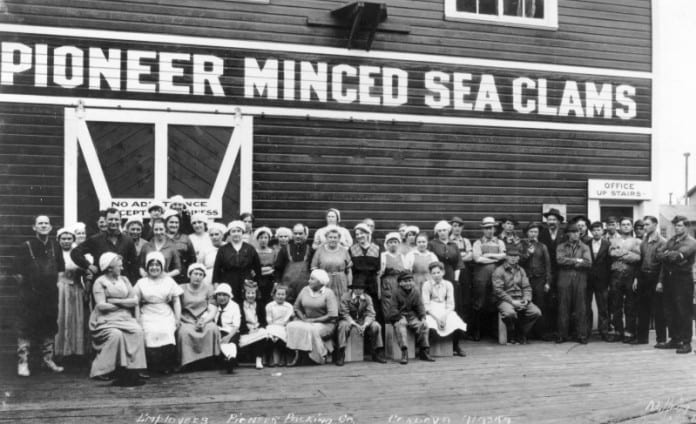
The fishing boom in Cordova didn’t revolve just around salmon. Clamming began in the mid-teens with the opening of the Lighthouse Canning and Packing Co. quickly to be followed by G.P. Halferty who completed a two-line cannery in 1916. Together these plants heralded the commencement of the Alaska razor clam industry. In 1916, 35 diggers dug nearly half a million pounds of clams and in the following year which was the peak for the industry 135 diggers unburied three and a half million pounds of razor clams. The heavy exploitation of Cordova’s beaches led to the nickname of “Razor Clam Capitol of the World” and the distinction of generating over half the clam pack produced for the entire United States.
This photo came from the archives and collections of the Cordova Historical Society.













